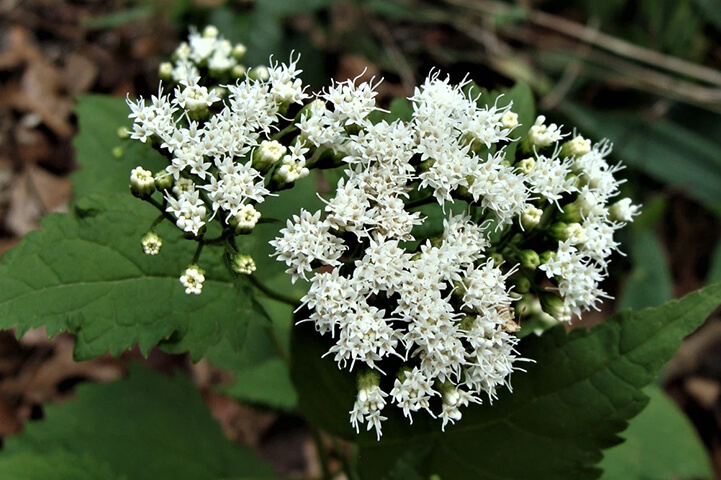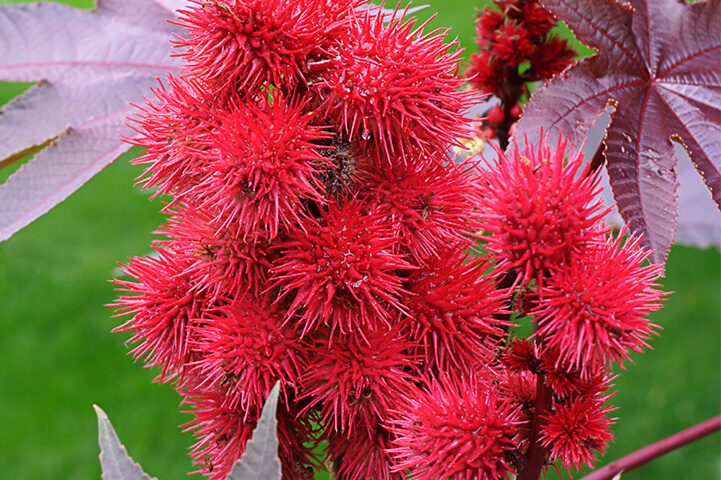Similar to animals, there are some plants who have evolved themselves to have both physical and chemical defence mechanism which help them escape their predators which most often than not are us, humans. Here are some of the most dangerous plants in the world which you should be aware of for your own safety.
The spine found in some of these plants keeps them safe to a certain extent. However, most of the plants are capable of producing different kind of chemicals when they come in contact with other beings, especially humans and animals.
In this way, the plants indirectly defend themselves from their predators. So when you are out in the wild and trekking or just trying to get closer to mother nature you would want to stay away from these plants.
10 Of The Most Poisonous Plants In The World You Need To Stay Away From
Please note that these are widely considered to be some of the deadliest plants in the world, however, we do not rank them from being the least deadly to the most, they are stated in the random order below.
1. Jimsonweed

- Jimsonweed is also known as Thorn apple and Devil’s snare and trust us, is used to make medicines which can treat Asthama, Cough, Influenza, Nerve diseases and Swine Flu as well.
- However, people use it as a recreational drug which causes hallucinations and give a sense of well-being which is called Euphoria.
- Jimsonweed is poisonous which is largely concentrated in the leaf and seeds.
- The toxins effects could include dry mouth, extreme thirst, seizures, nausea and vomiting, increased heart rate, loss of consciousness, breathing issues and in some cases could lead to death.
- Jimsonweed could grow anywhere between 3 to 5 feet while the leaf can grow between 5 to 8 inches.
2. Oleander

- Oleander is also often called as Nerium and is a shrub/ small tree and cultivate worldwide in subtropical and temperate areas.
- Oleander is one of the most poisonous plants in the world which could cause death and is commonly used as a suicide agent, especially in parts of Asia.
- Containing chemicals such as glycosides, it affects the heart of the person and these chemicals slow down the heart rate.
- Oleander can cause many problems including nausea and vomiting, diarrhoea, headache, serious heart problems, weakness and stomach pain.
- It is also said that merely touching the Oleander sap can cause rashes.
- Oleander blooms sweet0smelling flowers in clusters and colour can vary between Red, Ping and white.
3. Rhododendron

- The tale of Rhododendron being poisonous goes back to 1st century BCE when it was said that the Roman Troops were allegedly poisoned when they were given honey made of the nectar of the flowering plant called Rhododendron.
- Rhododendrons are attractive spring blooming plants found in many Asian countries and bloom with flowers coloured Pink, Violet, Red, White and even Yellow.
- The three main toxins found in Rhododendron are Andromedotoxin, Grayanotoxin and Rhodotoxin with the highest concentration to be found in the leaves. This is one of the deadliest plants in the world.
- Various problems caused by this deadly plant are Hypersakivation, Colic, Diarrhoea, Depression, Cardiovascular collapse, Retching, Seizures, Pulmonary edema, Vomitting, Weakness and also Death.
Also Read: Air Purifying Plants That You Should Keep Inside Your House To Clear Air!
4. White Snakeroot

- Also knows as Snakeroot, Richweed, and White Sanicle is one of the most dangerous plants in the world which are generally found in Eastern and Central regions of North America.
- This plant contains a chemical called Tremetone and in cattle, consumption can lead to death.
- Also, when a human drinks the milk or consume the meat of the animal poisoned by White Snakeroot can cause poisoning in humans.
- The poisoning in humans caused by this is called Milk Sickness and its symptoms can include Loss of appetite, Nausea, Abdominal discomfort, Weakness, Reddened tongue and mucous membranes and also abnormal acidity in the blood.
- Back in the 19th century, more than 1000 people died of Milk Sickness and it is widely reported that Nancy Hanks, mother of Abraham Lincoln, dies of Milk Sickness.
5. Angel’s Trumpets

- Also known as Devil’s Trumpet is also known to be used to make medicine for Asthama and other conditions, however, not much scientific evidence is present to support its effectiveness.
- Angel’s Trumpets contain chemicals which cause Hallucinations and euphoria but can also cause bigger problems in the human body when leaves and seed are consumed as they contain the highest concentration of toxins.
- Some big problems caused by this deadly plant include Constipation, Persistent heartburn, Fever, Stomach ulcer, and in some cases even lead to Heart failure and also fluid build up in the body.
- This plant generally reaches a height between 10 to 20 inches and carries a strong pleasant smell.
- The colour can vary from White, Yellow, Orange and even Red.
6. Aconite

- Also known as Wolf’s bane, monkshood, devil’s helmet, women’s bane and queen of poisons and could be found in the hilly region of the Northern Hemisphere.
- The plant’s stalks are loaded with purple flower and every blossom is shaped like a hood of a medieval monk making them distinct.
- The plants contain aconitine and other alkalodis which are highly toxic and are classified as neurotoxins and cardiotoxins.
- It is widely regarded that the toxins of this plant was used by ancient Greeks to kill large animals like leopards.
- Consumption of this plant could lead to serious complications including burning, diarrhoea and vomiting. It could also lead to variations in blood pressure, heart irregularities and coma.
7. Castor Bean

- Also known as Ricinus, African Coffee Tree and Castor Oil plant and is found at various parts of the world.
- It is famous for being used in medicine and has been used for centuries. However, it is also one of the most dangerous plants in the world as it contains the deadly poison called ricin.
- This is the reason why it is asked to remove the hull of this plant before using it. Ricin has been tested as a chemical warfare agent.
- It is said that Ricin is 6,000X more poisonous than Cyanide.
- Upon consuming this deadly plant, humans can feel a drop in blood pressure, burining in mouth, diarrhoea, pain and if not treated in 24 hours, it could cause death.
8. Atropa Belladonna

- Also known as Belladonna or the Deadly Nightshade is native to Europe, and Western and North Africa.
- Atropa Belladonna is used for hallucinations in the Mediterranean countries.
- The wrong dosage of this plant can result in Seizures, breathing issues, constipation, fatigue, difficulty in urination, and even agitation has been reported in infants.
- Though it is considered unsafe, this plant has rich medicinal purposes as it is used to stop bronchial spasms in asthma as well as whooping cough. It is also used as a remedy for hay fever and cold.
- However, as this plant contains highly poisonous tropane alkaloid toxin, if an adult consumes two or more berries of this plant, he/ she could be dead and this becomes even more deadly as people can confuse them with blueberries.
9. Cicuta Virosa

- Also known as cowbane and the northern water hemlock is native to Northern and Central Europe, Northern Asia as well as Northwestern North America. It is considered to be one of the most poisonous plants in the world.
- The U.S. Department of Agriculture (USDA) has also categorised it as the most violently toxic plant which grown in North America.
- What makes this plat so deadly is that each and every part of Cicuta Virosa is toxic and can result in death in as little as 15 minutes.
- These plants can grow anywhere between 1 and 2 metres in height and have small umbrella shape and green or white coloured flowers.
- Poisoning from this plant could result in Seizures with intermittent relaxation, rolling of eyes and other behavioural abnormalities, turning in circles, twisting of the neck, opening and shutting of mouth, falling down, nausea, vomiting, diarrhoea, hypertension and also coma.
10. Rosary Pea

Also known as Jequirity Bean, Jumbie Bean and Crab’s eye and can be found in India, parts of tropical Asia and even in the US and are considered as one of the most poisonous plants in the world.
Rosary Pea is a perennial climbing vine which has seeds which look like you can eat them, but trust you us, they are very, very deadly.
The seeds of this plant contains a toxic protein named Abrin and is said to be so poisonous that even a single seed of this plant can kill a person in 36 hours.
This poison from this plant prevents cells from creating proteins which they demand and eventually the cells die.
Eating the seeds of this plant can cause difficulty in breathing, vomiting, diarrhoea, dehydration and also pain in the eyes.
With this, we conclude the list of the 10 Most Dangerous Plants In The World which you should be aware of, especially if you are planning on going for a trek or an adventure trip in the wild and woods. How many of these plants did you know already? Do tell us down in comments.
Frequently Asked Questions (FAQs)
Question 1: Which plant can kill a human?
Answer 1: There are lakhs of species of plants which are known to the world and there are many of them which can kill a human, we have made a list of 10 most poisonous plants in the world which you should know of.
Question 2: What are the 10 most poisonous plants?
Answer 2: If you are looking to know the 10 most poisonous and deadly plants in the world, no need to look any further, we have made the list of just that. Some of them are Rosary Pea, Castor Bean Plant, Aconite and Jimsonweed.
Question 3: What is the most poisonous flower on earth?
Answer 3: There are many poisonous flowers on earth, however, one of the most poisonous is Oleander which is highly poisonous when a human ingests it. There are many other more deadly plants which you can find on our list.


